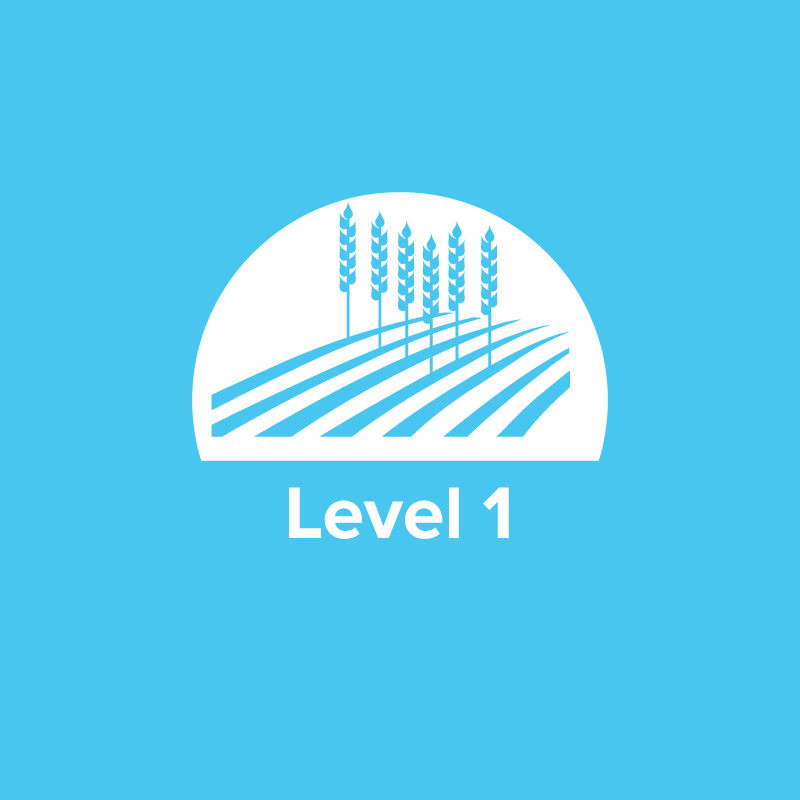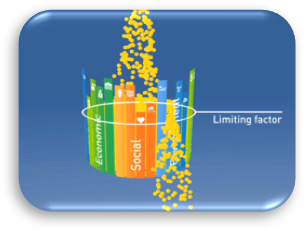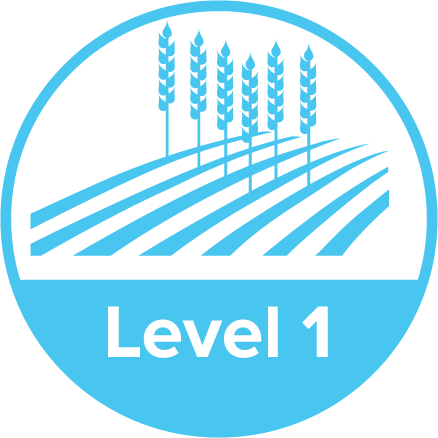Journey 2050 Lesson 1: Sustainable Agriculture (Grades 9-12)
Students will explore the question, “How will we sustainably feed nearly 10 billion people by the year 2050?” as they discover what sustainable agriculture is and how it is critical to securing a stable food supply and future for a growing population.

Background
Lesson Activities
Recommended Companion Resources
Credits
Author
Lindsey Verhaeghe, Andrea Gardner, Debra Spielmaker, and Sara Hunt | National Center for Agricultural Literacy (NCAL) and Nutrien
Acknowledgements
The Journey 2050 program was originally developed by Nutrien in collaboration with Calgary Stampede, Alberta Canola Producers Commission, Nutrients for Life Foundation, and Agriculture in the Classroom Canada. Authors and contributors were drawn from each of these organizations under the direction of Lindsey Verhaeghe (Nutrien) and Robyn Kurbel (Calgary Stampede.) The lessons were updated and revised in 2017 and 2022 with contributions from the original J2050 Steering Committee, the National Center for Agricultural Literacy, and the National Agriculture in the Classroom Organization.
Sources
- http://www.economist.com/node/18200702
- Sustainable Development Network Solutions (2013). Solutions for Sustainable Agriculture and Food Systems http://unsdsn.org/mwg-internal/de5fs23hu73ds/progress?id=EHV3NQH3C4-PP-EivDwXY4i2HzIjIWty8lBnkNioco0,
- http://www.fao.org/mwg-internal/de5fs23hu73ds/progress?id=HXecPI0p3XpJtFbAsjLRZd3G4ZjPgUW5N3PqtZYwwio
- http://waterfortheworld.net/index.php?id=12
- http://www.un.org/sustainabledevelopment/sustainable-development-goals/
- Sustainable Development Network Solutions (2013). Solutions for Sustainable Agriculture and Food Systems http://unsdsn.org/mwg-internal/de5fs23hu73ds/progress?id=EHV3NQH3C4-PP-EivDwXY4i2HzIjIWty8lBnkNioco0,
- https://www.un.org/sustainabledevelopment/poverty/
- https://www.wfp.org/stories/5-facts-about-food-waste-and-hunger#:~:text=1, and http://www.un.org/waterforlifedecade/food_security.shtml
- https://irp-cdn.multiscreensite.com/be6d1d56/files/uploaded/TG07-Agriculture-Report-WEB.pdf
- http://www.economist.com/node/18200702
- http://www.worldfooddayusa.org/food_waste_the_facts
- http://www.un.org/en/globalissues/briefingpapers/population/vitalstats.shtml
- Sustainable Development Network Solutions (2013). Solutions for Sustainable Agriculture and Food Systems http://unsdsn.org/mwg-internal/de5fs23hu73ds/progress?id=EHV3NQH3C4-PP-EivDwXY4i2HzIjIWty8lBnkNioco0
Standards
National Content Area Standards
- Career & Technical Education
- AFNR (Grades 9-12): Environmental Service Systems Career Pathway
- ESS.02.02: Compare and contrast the impact of current trends on regulation of environmental service systems (e.g., climate change, population growth, international trade, etc.).
- ESS.02.03: Examine and summarize the impact of public perceptions and social movements on the regulation of environmental service systems.
- AFNR (Grades 9-12): Natural Resource Systems Career Pathway
- NRS.02.02: Assess the impact of human activities on the availability of natural resources.
- AFNR (Grades 9-12): Environmental Service Systems Career Pathway
- Social Studies – Economics
- Economics Standard 1 (Grades 9-12): Scarcity
- Objective (Grades 9-12): Identify what they gain and what they give up when they make choices.
- Economics Standard 2 (Grades 9-12): Decision Making
- Objective (Grades 9-12): Make effective decisions as consumers, producers, savers, investors, and citizens.
- Economics Standard 1 (Grades 9-12): Scarcity
- Social Studies – History
- NCSS 8 (Grades 9-12): Science, Technology, and Society
- Objective 2: Science and technology have had both positive and negative impacts upon individuals, societies, and the environment in the past and present.
- Objective 9: Science, technology, and their consequences are unevenly available across the globe.
- Objective 10: Science and technology have contributed to making the world increasingly interdependent.
- Objective 11: That achievements in science and technology are increasing at a rapid pace and can have both planned and unanticipated consequences.
- Objective 12: Developments in science and technology may help to address global issues.
- NCSS 9 (Grades 9-12): Global Connections
- Objective 4: The actions of people, communities, and nations have both short-and long-term effects on the biosphere and its ability to sustain life.
- NCSS 3 (Grades 9-12): People, Places, and Environments
- Objective 3: Consequences of changes in regional and global physical systems, such as seasons, climate, and weather, and the water cycle.
- Objective 4: The causes and impact of resource management, as reflected in land use, settlement patterns, and ecosystem changes.
- NCSS 8 (Grades 9-12): Science, Technology, and Society
- Science
- HS-ESS3: Earth and Human Activity
- HS-ESS3-3: Create a computational simulation to illustrate the relationships among the management of natural resources, the sustainability of human populations, and biodiversity.
- HS-LS2: Ecosystems: Interactions, Energy, and Dynamics
- HS-LS2-7: Design, evaluate, and refine a solution for reducing the impacts of human activities on the environment and biodiversity.
- HS-LS4: Biological Evolution: Unity and Diversity
- HS-LS4-6: Create or revise a simulation to test a solution to mitigate adverse impacts of human activity on biodiversity.
- APES Unit 5: Land and Water Use
- STB-1.A Introduction to Sustainability: Explain the concept of sustainability.
- STB-1.E Sustainable Agriculture: Describe sustainable agricultural and food production practices.
- HS-ESS3: Earth and Human Activity
 The economic component of sustainability is about earning money—creating jobs and incomes to support the national and local community. The social element encompasses things like food, education, medical care and infrastructure, including the roads used to transport food from the farm to your plate. And finally, there are environmental needs to consider. Soil quality needs to be maintained, habitats need protection, water must be conserved, and we need to protect our atmosphere by keeping greenhouse gas emissions to a minimum.
The economic component of sustainability is about earning money—creating jobs and incomes to support the national and local community. The social element encompasses things like food, education, medical care and infrastructure, including the roads used to transport food from the farm to your plate. And finally, there are environmental needs to consider. Soil quality needs to be maintained, habitats need protection, water must be conserved, and we need to protect our atmosphere by keeping greenhouse gas emissions to a minimum. Preparation: Prior to class, review the Background Information, video clip, and slide deck associated with the lesson. Review the
Preparation: Prior to class, review the Background Information, video clip, and slide deck associated with the lesson. Review the 